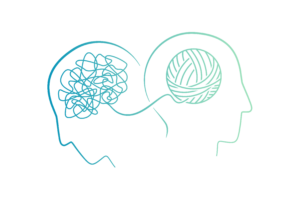The Generation Z Paradox
Gen Z, sometimes called Zoomers or post-millennials, now comprises about a fifth of the American population. Born between 1997 and 2012, they’ve grown up in a world dominated by the internet, are shaping culture via social media, and navigating through a tumultuous era marked by significant social upheavals such as school shootings, protests against police brutality, economic instability, and the ongoing challenges of the COVID-19 pandemic.
Gen Z has also experienced unprecedented connectivity to global cultures, accessing news and issues at an earlier and more frequent rate than any previous generation. This extensive cultural exposure likely influences their focus on key themes such as sustainability and holistic health (healthcare as self-care). A deeper inspection of the latter, however, reveals a concerning trend.
The Current State of Gen Z’s Health
A look at Gen Z in America today shows many are overweight/obese, medicated, and suffer from mental disorders, all of which are reflected in their happiness:
- 56% are overweight/obese
- 61% have a medically diagnosed anxiety condition
- Of which about 30% are taking medicine
- Rank 62nd among all countries on the world happiness scale
A lack of purpose coupled with loneliness/isolation is at the root of Gen Z’s discontent, thus they’re not only leveraging technology (they are after all digital natives), but also seeking IRL social connections, and spaces where meaningful interactions can occur to boost their wellbeing.
More than a few inventive companies and organizations are aiding in facilitating this journey, as they recognize Gen Z will soon be the largest generation fueling the US economy, as well as the fact that many of the transformations they seek will foster a healthier future for people and planet (and most likely profit as well).

Innovators Gratifying Gen Z’s Wellness Demands
Fitness Competitions
Fitness competitions are being updated to better serve Gen Z’s more holistic approach to working out, emphasizing connection and community over just sheer grueling exercise.
- While not created with Gen Z specifically in mind, Hyrox is seeing a phenomenal surge in global popularity. By simply adding a very digital ingredient – gamification – into working out at the gym, Hyrox is not only aiding in the battle of the bulge but also in creating an environment where social connections can be made (e.g., team competitions, LEVLS app, etc.).
- Let’s Move for a Better World takes many of the underlying principles of Hyrox and elevates them into a social good movement, another aspect that characterizes Gen Z’s ethos, transforming a Technogym workout into a donation for a good cause.
Analysis
These competitions prioritize fitness and community, as well as in some instances purpose-driven activities, but for the most part, the gyms themselves are the spaces where meaningful (and IRL) connections will likely occur. Many gyms are already developing holistic wellness programs and personalized support services to champion all members’ mental health, and the industry has also begun advancing Gen Z-specific strategies. However, there does appear to be significant white space still, particularly for ideas that could scale (and potentially drive the value of the health club industry beyond current projections).
Mental Health Gyms
Contrary to a traditional gym, where you engage in physical exercise, a mental health gym focuses on mental workouts. These gyms emphasize emotional fitness and provide flexible, often affordable opportunities for participation, something Gen Z is sure to appreciate. Traditionally devoted to brain exercises like meditation and journaling, more novel concepts are now surfacing, so expect additional models and brands to emerge in the coming years.
- Inception offers a physical space for 90-minute trauma release circuit training or a 4-day boot camp, and online workshops, all led by certified inner fitness trainers, to aid in mind and body alignment. Each workout features various research-based therapies to relax the brain and body, restore healthy sleep patterns, and support the major systems of the body. Some experts say performing these types of activities regularly can help people adapt to mental pressure.
- COA provides online, small-group, therapist-led courses that include interactive exercises and discussions to aid in the emotional fitness journey. COA promises to “build your mental health routine and increase self-awareness, resilience, mindfulness, and more for $49/mo – less than the cost of one private therapy session”.
Analysis
While relatively affordable when compared to most 1:1 counseling options, and often a frictionless, digital experience, there does not appear to be a mental health gym option explicitly designed to engage Gen Z, catering to their unique worries such as academic stress or cyberbullying. Peer-to-peer communities (that could potentially even meet up IRL) and more experiential tech overlays may also have greater appeal to this demographic.
Therapy Apps
Therapy apps provide a discreet, convenient, and frequently cost-effective avenue to seek mental health support without needing in-person visits to counseling centers or therapists’ offices. Through video, phone, and/or text, you can connect with your therapist when you want, and how you want, based on your individual preference. All, no doubt, very attractive features to Gen Z.
- TalkSpace, a matching service (much like a dating service) uses AI to pair those seeking help with their mental well-being with its network of licensed therapists so patients can affordably (or via insurance) receive online counseling using the TalkSpace app. Its services include therapy for individuals, couples, LGBTQIA, veterans, and teens. Along with its Health Collective partners such as Oura, Evernow, Bicycle Health, Conceive, and Options MD, TalkSpace is tackling the entire health spectrum, in a very modern way, ensuring all Americans have access to the care they desire.
- BetterHelp and its sister site Teen Counseling provide a similar matching service to TalkSpace, however, insurance is not accepted, and the app’s single subscription service is subject to surge pricing (something rideshare services have popularized to the point of its being what’s expected rather than an unusual practice), although discounts and financial aid are available.
Analysis
The mental health app market appears to be meeting Gen Z’s needs, however additional functionality (e.g., VR experiences) and partnerships (e.g., IRL types of affiliations), could potentially drive the sector even further.
Wellness Communities
Wellness communities are beginning to expand beyond just Wellness Real Estate and into like-minded groups that come together to nourish their own as well as one another’s souls, fostering IRL social connections in spaces where meaningful interactions can occur (something that should definitely resonate with Gen Z).
- The Well Bay Harbor puts wellness at the center of all aspects of life, from where you live (residences), to where you work (offices), to where you play (gym, spa, neighborhood). The mixed-use development claims to address the physical, mental, and spiritual aspects of well-being, thus supporting a lifestyle of whole-person health.
- Open Source Wellness was founded upon the belief that healthcare today provides behavioral prescriptions (e.g., exercise more, eat better, reduce stress, seek social support) that often produce stigma (initially due to privacy concerns) and are simply transactional. As a behavioral pharmacy, the actual delivery system for transformational health is furnished, all via community. Through partnerships with clinical healthcare, insurers, community-based organizations, and employers, Open Source Wellness practices what it has termed experiential medicine or “community as medicine”.
Analysis
Luxury wellness real estate will most likely never lose its luster, but the price is beyond reach for most, and Gen Z’s philosophy on luxury could have an impact on this sector in the coming years. IRL, more practical wellness programs, however, show considerable promise in alleviating the mental health crisis, as they can be affordable and inclusive of people from all walks of life (which should resonate with Gen Z’s views on equity), and provide spaces where meaningful connections can be made.
Futuristic Cities
Futuristic cities are urban areas developed to promote lifestyles of well-being through sustainability, advanced technology, and community, to meet the evolving needs and challenges of the future. They aim to create a high quality of life for residents while addressing issues such as urbanization, climate change (a top Gen Z worry contributing to their anxiety), and resource management.
- Telosa, the brainchild of billionaire Marc Lore, aims to forge a revolutionary path in urban living on American soil, setting a global benchmark for future cities. With its location still under wraps, Telosa promises a pedestrian-friendly environment complemented by ‘slow-moving autonomous vehicles.’ The sustainable city will harness renewable resources, champion green spaces, and pioneer water conservation and reuse. But Telosa is more than just eco-initiatives; it champions “equitism”, an economic system where citizens have a stake in city land.
- NEOM, a futuristic (and grandiose) urban development project in Saudi Arabia, is envisioned as a hub for innovation, technology, and sustainable living. Spanning across the northwest region of the country, NEOM aims to create a vibrant, modern metropolis that integrates cutting-edge technology, renewable energy sources, and advanced infrastructure. The project promises to revolutionize various sectors, including healthcare, education, transportation, and entertainment, with a focus on sustainability and environmental conservation. NEOM aspires to attract top talent, entrepreneurs, and investors from around the world, positioning itself as a global center for innovation and economic growth in line with Saudi Arabia’s Vision 2030 goals (and potentially Gen Z’s as well).
Analysis
At the heart of futuristic cities lie the principles of intentional design, purpose-driven prioritization, advanced technology, and environmental responsibility. These principles are in alignment with Gen Z’s values, so in theory, smart cities should someday see Gen Z flocking to enter. Until they are built, smaller-scale initiatives could potentially fill the void.

Charting the Path for Generation Z and Beyond
As Generation Z navigates its health and wellness journey, innovative solutions are emerging to address their unique needs and challenges. From fitness competitions to mental health gyms and futuristic cities, these initiatives blend technology, community, and purpose to promote holistic well-being (novel medications could potentially be integrated as well). By continuing to innovate and collaborate, we can create a healthier and happier future for Gen Z and beyond.
_________________________________________
If you know other innovators catering to Gen Z’s wellness journey or would like to discuss growth strategies for your brand, please email us at hello@migrationmarketing.com with the subject line: Blog Inquiry.
_________________________________________
About the Author
Carol Maggio is a Senior Consulting Strategist at Migration Marketing.

